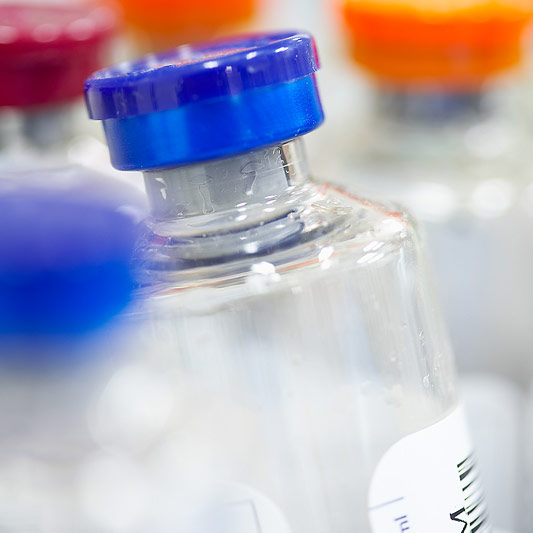
MONDAY, Dec. 21 (HealthDay News) — Scientists have identified a protein that may be involved in the development of type 2 diabetes, a finding that could lead to new drugs to fight this growing worldwide scourge.
This same group of researchers recently showed that inhibiting this pathway worked to block pain associated with gout, an inflammatory condition affecting the joints.
Inflammation also plays a large role in diabetes.
The authors of this study, published online Dec. 21 in Nature Immunology, started their exploration with the NLRP3 inflammasome, which has been linked with different inflammatory diseases.
Inflammasomes are clusters of proteins that stimulate inflammation and play a role in the body’s innate immune response, explained Dr. Norma Kenyon, professor at the Diabetes Research Institute of the University of Miami Miller School of Medicine. She is familiar with the new findings.
“The inflammasome sense situations that are dangerous to our body,” added study senior author Jurg Tschopp, a professor at the University of Lausanne in Epalinges, Switzerland. “This includes pathogens (bacteria, viruses), but also endogenous ‘danger situations,’ such as uric acid crystals found in gout, high circulating glucose found in diabetes or beta-amyloid [plaques] found in Alzheimer’s disease.”
Until now, scientists were unable to figure how out the NLRP3 inflammasome is activated. With that information now in hand, researchers might have another promising route to developing treatments for type 2 diabetes.
The chain of events seems to start with a protein called TXNIP, which, when exposed to oxidative stress, binds to NLRP3 and leads to the production of interleukin-1 beta or IL-1b, an immune system molecule.
IL-1b is also produced by the pancreas’ islet cells as a response to high blood sugar. These islet cells are also responsible for secretion of insulin.
To determine if islet production of IL-1b was caused by the interaction of NLRP3 and TXNIP, the researchers exposed islet cells from normal mice and from mice deficient in NLRP3 or TXNIP to high glucose levels. As predicted, the protein-deficient islets made less IL-1b.
What’s more, these deficient mice cleared glucose from the bloodstream quicker in response to insulin.
“Our findings predict that type 2 diabetes can be treated by inhibitors of the inflammasome or IL-1b,” Tschopp said.
The good news is that these effects of NLRP3 are confined to the insulin-producing beta cells of the pancreas, so compounds to inhibit the pathway should not have systemic effects.
Studies in humans are already under way. According to Tschopp, “clinical studies with type 2 diabetes patients have already been initiated and the first results are again incredibly encouraging. With a single injection of IL-1b inhibitors, glucose levels in diabetes patients are highly reduced during six months. This treatment could replace the standard treatment currently used.”‘
More information
There’s more on type 1 and type 2 diabetes at the American Diabetes Association.

